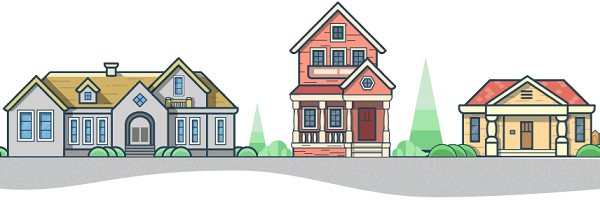
Are you car shopping? Hooray, now you get to argue with people over which is better: leasing a car or buying a car. The traditional wisdom says it’s better to finance because you build equity and keep the asset.
But that was before prices launched into space. Today, the average price of a new car is double the cost of a 4-year college degree. And that’s before car insurance, gas, maintenance, and repairs. Not to mention, more companies are letting employees work from home, ending the dreaded commute.
Times have changed. Did the traditional wisdom age well? Before you buy a new car, make sure the advice you get isn’t a lemon. Leasing a car vs buying a car, which one is actually better? Let’s find out.
- Buying or leasing a car: which one is better?
- What is the difference between leasing and financing?
- When does it make sense to lease or buy a car outright?
- Before you finance a car
- The pros and cons of financing a car
- If you choose to finance, here's a hack
- What is a leased car?
- How does leasing a car work?
- The pros and cons of leasing a car
- Are there different types of car leases?
- Can I negotiate a car lease?
- Leased car and car insurance
Buying or leasing a car: which one is better?
Between the price of gas, cost of insurance, upkeep and repairs, motorists pay a lot just to get around. And that’s before you factor in the cost of a car loan or a lease. So what’s the most cost-effective way to drive in Canada: leasing a car or buying a car? Well, not many people can drop a pile of cash on a new car to buy it outright. Most of us need to get a loan if we want to buy a car.
That means leasing is actually the better option for most people. But there are times when buying a car makes more financial sense. More on that later.
Even though leasing defies traditional wisdom, the numbers track. There’s a right way to use a car lease to your maximum advantage if you know how it works, what to look for, and what to avoid.
The problem is this: most people don’t understand the world of car leasing. So they end up signing contracts that make them worse off, bolstering the belief that buying is better. Sometimes it is, but the right car lease can be a powerful financial tool.
Jorge Diaz will blow your mind with his book Car Leasing Done Right: A Canadian Guide for Understanding & Optimizing Vehicle Leasing Costs. In it, Jorge uses 15 years of data to show how the right lease with the right terms can be the most cost-effective way to drive in Canada. Then, he teaches you all kinds of crazy tips, like:
- What all the confusing jargon means
- What to look for
- What to avoid (like making a down payment!)
- What the numbers mean and how to crunch them
- How to transfer your lease without hurting your credit score
- And so much more
What is the difference between leasing and financing?
A leased car is like paying rent for your apartment, but financing a car is like paying the mortgage on your house. When you finance a car, you borrow money from a lender and use it to purchase a car. In most cases, you have to provide a down payment and have a good credit score to qualify for traditional financing.

With financing, you agree to pay the loan back with interest and fixed monthly payments over a specific period of time, called a term. The most common term for a car loan is 5 years, but can be as short as 2 or as long as 7.
Recap: Leasing a car means you pay the dealership for driving privileges instead of purchasing it. Financing a car means you borrow money to buy it, then repay the lender.
When does it make sense to lease or buy a car outright?
While many people are enjoying their new home offices, you might not be so lucky. Right now, the only word that accurately describes the Canadian housing market is “insane.” Millions of people cannot afford to live in the same city where they work.
Can you relate? If you have to commute every day, that’s going to add a ton of unavoidable miles to your car. Here’s what a leasing expert has to say:
“I love promoting car leasing over financing for one simple reason: it’s better in all categories except when you have to drive a lot.” – Jorge Diaz
If you are likely to put more miles on the car than the lease allows and there’s just no way around it, then financing makes more sense. Simple as that.
Before you finance a car
Before you buy a car, think about how much you actually need to drive it. Is it filling a legitimate transportation need, or is it just more convenient to drive?
- Can you walk or bus to your grocery store?
- Do you work from home or commute every day?
- Can you carpool or take the bus to work instead of driving?
- Can you walk or bus to your most visited places like schools, daycares, restaurants, shopping, family & friends?
- Can your children bus or walk to school?
If you don’t put a lot of miles on your car, do you still think financing is better because you have more control and eventually own it? Those are excellent advantages. But they might be good enough reasons to finance your car purchase. Are there any other reasons that you’d rather buy your car rather than lease it?
For example, some people might want to own their car until it essentially stops working or until the cost of repairs outweighs the cost of buying or leasing something newer. There is a reason you see older cars out on the roads! You can own the same car for well over a decade. You might also want to keep a car for your young driver to eventually use.

Owning something outright is better for some people who have budgeted the money to finance and maintain the car. It comes down to your budget and the other costs in your life. However, ownership is not the be-all-end-all of financial independence, it comes with other costs and tradeoffs.
The pros and cons of financing a car
Do you think owning is better than renting? Again, there are upsides and downsides to everything. Before applying for a car loan, make sure there aren’t any deal breakers for you.
Pros:
- Longer financing terms are available
- Payments build equity & you own it in the end
- You can drive it as much as you want
- There are no wear-and-tear charges
- There is no penalty to sell or trade-in during the term
- The trade-in value can help lower the cost of a new car
- You can make changes and modify the car how you want
- Eventually, you don’t have to budget for payments anymore
- The value of an asset can count towards your net worth
- Moving out of the province during the term is easier
- You can leave it to your children to drive
- Don’t have to buy more insurance than you want or need
Cons:
- The down payment is usually higher
- Harder to qualify for traditional financing
- The monthly payments are usually higher
- You’re less likely to afford the model or upgrades you want
- The value of your asset depreciates
- Ongoing maintenance & repair costs add up
- The warranty will likely expire before you pay off or sell the car
- More out-of-pocket repair costs
- Car loans over 5 years have higher interest rates
- Car loans over 5 years are more likely to have negative equity, which means you owe more than the car is worth
- Negative equity makes trading in your car more expensive
Read More: How Car Insurance Works in Canada: Your Complete Guide
If you choose to finance, here's a hack
In today's digital age, technology has made many aspects of our lives easier – including financing cars. With online platforms like Car Loans Canada, we can now apply for loans online and receive multiple offers from different lenders across Canada without ever leaving our house. This technology-driven approach not only saves time but also promotes transparency and competition among lenders. What does that mean for you? Saving money with better rates and terms are your fingertips.
What is a leased car?
Think of it like renting an apartment vs. buying a house. When you lease a car, you are basically renting it for a specific period of time, called a term. At the end of the term, you give the car back to the dealership instead of owning it outright.
Car lease payments are exactly like rent. They simply buy the right to use the car for a while. Your payments don’t build equity in an asset that you will eventually own, just like you won’t own your apartment when your rental lease is up. Instead, those payments build equity for the person who does own the asset, which isn’t you.
That’s not necessarily a bad thing, but it’s something to consider before you buy a new car. And just like you can’t paint the cupboards in your apartment or put nails in the walls, there are restrictions on what you can and can’t do with your leased car.
But if you don’t care about that, and just want the most cost-effective way to move from point A to B, it’s critical you understand how car leasing works. It could save you thousands of dollars.
How does leasing a car work?
Let’s circle back to that apartment analogy. When you sign a rental agreement, you get to live in someone else’s property for a fixed period of time for an agreed-on monthly price. That’s the foundation of every single car lease agreement. You still need to provide information as if you were applying for a loan like proof of identity, residence, income, and a credit check. Although the credit score requirements for a leased car are generally much less strict than financing, the lease payments can help you build credit.
A car lease gives you the keys to a brand new vehicle for a certain period of time at a specific cost per month. But you can’t just walk in, sign something, and drive off the lot. It’s not a library book.
A car lease agreement might require you to make a down payment first, kind of like how landlords require a security deposit before you can move in. And those monthly car lease payments cover things including, but not limited to:
- The Manufacturer’s Suggested Retail Price (MSRP)
- Interest
- Taxes
- Depreciation
The price you actually pay per month is impacted primarily by the car’s price, length of the lease term, and the expected resale value at the end of that term. Leased car terms are usually between 2 and 4 years long. Occasionally, you can find a 5-year lease, but it’s rare and generally not recommended from a cost-benefit perspective.
The pros and cons of leasing a car
Every decision in life has a trade-off. Leasing a car is no exception. A leased car is almost always cheaper in the short term and there are far fewer repair costs. Before you sign on the dotted line, make sure the lease benefits you.
Pros:
- Easier to qualify for
- On-time payments can improve or build your credit score
- Lower down payment
- Lower monthly payment
- Afford a nicer/newer model
- Upgrade to a new car every few years
- There’s usually bumper-to-bumper warranty coverage
- Warranty almost always lasts as long as the lease term
- Fewer out-of-pocket repair costs
Protip: Make sure the warranty doesn’t expire before the lease term ends. Choose a term that is at least as long as the warranty or shorter. That way, you’ll never have to pay for certain kinds of super expensive repairs.
Cons:
- You don’t own the car
- There are mileage restrictions
- There are additional charges for excess mileage
- There are additional charges for excessive wear-and-tear
- There are mandatory regular maintenance requirements
- You cannot make any modifications or after-market upgrades
- There are penalties for breaking the term early
- Moving out of the province during the term is a hassle
- You probably need to have both comprehensive and gap insurance
Read More: Comprehensive Car Insurance: Do Canadians Really Need It?
Are there different types of car leases?
Yes! Believe it or not, there are several different ways to lease a car. It’s not a one-size-fits-all contract. Think about your needs and what you want from a leased car, then choose the type of contract that aligns with your goals. Here are some common lease options:

Standard lease
A standard car lease is the most common type of lease for a new car. It typically requires you to make a down payment, but not always. A standard car lease ranges from 2 to 4 years, but a 3-year term is the most popular. When the term expires, you can choose to extend the lease, return the car, or buy it.
There is a limit on the number of miles you can put on the car. If you go over the limit, you’ll be charged a penalty. There are also penalties for wear-and-tear beyond what the dealership believes to be reasonable. If you damage the car, obviously you’re on the hook for that too.
Lease to own
A lease-to-own arrangement can help you purchase a car if you have bad credit or can’t afford to finance it. In that case, your payments build equity in the car like mortgage payments build equity in a house. Even though a standard lease offers a buyout option at the end of the term, it’s not the same as a lease-to-own contract.
Lease-to-own is a specific way to buy a car and usually requires a more frequent payment schedule, like weekly or bi-weekly. Unlike financing, there usually isn’t a credit check. That makes it easier for people who are new to credit or have a blemished credit history, to purchase a car without a traditional loan. The term is usually 1 to 2 years, and when it’s over you own the car.
Lease a used car
While most people tend to lease new cars, you can lease a used car too. In fact, most lease-to-own contracts are for used cars. The terms and restrictions are similar to a traditional car lease contract but are less beneficial to you beyond a lower monthly payment.
Used cars have wear, tear, and mileage from the previous owner which makes them less reliable. Also, all cars become less reliable as they age, even if the previous owner used it gently and kept the car in mint condition. The warranty is more likely to expire before the end of your term. If that happens, the cost of repairs could negate the benefit of lower payments.
Lease takeover
If you want to get out of your car lease or snag a better deal on a leased car, a lease takeover could be a good option. This type of arrangement transfers an existing lease contract from one person to another. Generally, you don’t need to provide a down payment because the existing leaseholder already did, and they usually offer you some sort of incentive to take over the lease too.
When you take over a lease, you also take responsibility for the mileage, wear, and tear caused by the other person. If you’re not careful, you could be surprised by additional charges at the end of the term.
Can I negotiate a car lease?
This is one of the best-kept secrets about leased cars. Yes, you absolutely can negotiate your car lease, but not many people know that. And the dealership certainly doesn’t want you to know that. In fact, according to Canada Drives, you have just as much negotiating power over a lease as you would over the purchase price if you were a buyer.

Don’t take the first offer. The monthly payment is impacted by the MSRP, which is the sticker price suggested by the car maker. It’s not set in stone for buyers, and it’s not set in stone for you either. Do your research to find out what “price” you can realistically get, and make sure you specifically ask for it.
Don’t open the negotiation by asking a car salesperson for their best offer, because you won’t get it. Name your price with the research to back it up, and go from there. Your budget will thank you.
Protip: Research upcoming rebates and discounts from car manufacturers too. Use that information to negotiate a lower price based on the incentives and savings a buyer would get.
Leased car and car insurance
Leasing a car could impact how much you pay for car insurance. It won’t change your risk rating in the eyes of the insurer, so that’s good. But the dealership could require you to have specific coverage that you might not have chosen if you bought the car instead.
In Canada, it is mandatory to have some sort of car insurance, and the exact requirements vary from province to province. However, the dealership owns your leased car and they may want to protect that asset by requiring you to have:
- Comprehensive insurance: generally includes third-party liability and collision coverage in one policy, and sometimes covers non-collision damage/loss from things like bad weather, theft, or vandalism.
- Gap Insurance: a new car loses about 10% of its value the moment you drive it off the lot, and can lose up to 34% of its value in the first year alone. Gap insurance protects you, or the dealership in this case, if you still owe more than the car is worth.
- Collision insurance: covers damage/loss from a single-car collision like if you hit a telephone pole. It can also cover damage/loss from a collision with another vehicle if that driver is uninsured.
Get the best price on car insurance with our Car Insurance Comparison Tool.






















About The Author: Heidi Unrau
Heidi Unrau is the senior Finance Journalist at Hardbacon. She studied Economics at the University of Winnipeg, where she fell in love with all-things-finance. At 25, she got her first bank job as an entry-level teller. She moved up the ranks to Credit Analyst, Loans Officer, and now a Personal Finance Writer. In her spare time, you'll find her hiding in the car listening to Freakonomics podcasts, or binge-watching financial crime documentaries with a pint of Häagen-Dazs. When she's not chasing after her two little boys, she's in the hot tub or arguing with her husband over which cash back card to use for date night. She’s addicted to coffee, crypto, and obsessively checking her credit score on Borrowell.
Fun Fact: Heidi has lived in five different provinces across Canada, loves her free Tangerine bank account, and will never cut back on Starbucks. Like ever.
More posts by Heidi Unrau